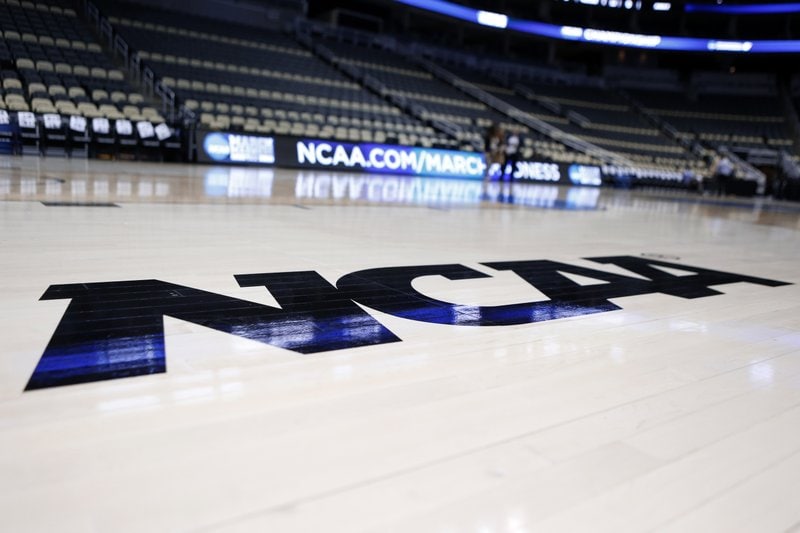
Canceling March Madness because of the coronavirus pandemic will cost the NCAA about $375 million that it would have distributed to 350 schools across the nation.
Some will be able to absorb the losses better than others.
The NCAA announced Thursday it will distribute $225 million to its Division I member schools in June, nearly two-thirds less than the $600 million scheduled to be handed out in installments from April to June.
Schools that compete in the wealthiest conferences, with billion-dollar television contracts fueled by major college football, might not notice much of a difference in the short term. Schools competing in mid-major conferences are preparing to make sacrifices.
“For us, a million dollars, that’s huge,” Atlantic Sun Commissioner Ted Gumbart said.
Ohio State President Michael Drake, chairman of the NCAA board of governors, said in statement the association will undertake cost-cutting measures to be determined in the upcoming weeks.
“The association has prepared for a financial catastrophic event like the one we face now,” Drake said. “While we certainly have challenges ahead, we would be in a far worse position had it not been for this long-standing, forward-focused planning.”
Big 12 Commissioner Bob Bowlsby said his 10-member league would have expected about $24 million from NCAA distributions. Instead, he estimated, the Big 12 will receive about $10 million.
“We’re going to take some hits there,” Bowlsby said.
Bowlsby said the Big 12 is likely to be down $15 million to $18 million total this academic year in terms of revenue, but could tap reserve funds to meet conference distribution projections. Last year, the Big 12 distributed about $35 million to each of its member schools.
“We have some unknowns in our budget that remain and will probably remain for a while, but I expect that we will be able to make our members whole on what we forecast as this year’s distribution,” Bowlsby said. “It’s a whole new ballgame if we find ourselves not playing football because of this. It affects everything we do.”
The NCAA pulled in more than $1 billion in revenue last year, including $867.5 million from the television and marketing rights for the Division I men’s basketball tournament. But March Madness was canceled March 19, a week before the first round was scheduled to begin.
The NCAA said $50 million of the distribution will come from its reserve fund while a $270 million event cancellation insurance policy will help pay off the remaining distribution.
The lost revenue was just as jarring in the NCAA’s two lower divisions, filled with smaller schools: Division II was projected to receive $13.9 million, $30 million less than last year, while Division III was expected to receive $10.7 million, $22 million less than last year.
Some $53.6 million will be distributed to Division I schools through the Equal Conference Fund, which pays each conference about $1.6 million.
That, at least, was good news to Gumbart and nine A-Sun schools.
“That’s kind of the lifeblood,” Gumbart said. “That’s what we use to do business. So that is much more important for the A-Sun than it would be for the SEC or a Power Five conference.”
The remainder of the $225 million will be proportionally distributed through seven other funds. That’s where the A-Sun and mid-major schools like it will take a big hit.
“We were expecting about $5.8 million dollars and we’re going to get less than half of that,” Gumbart said. “It simply limits what we can provide to our schools. It’s going to be a tough recovery year.”
New Mexico State athletic director Mario Moccia said via email that it was too early to tell exactly what impact the smaller NCAA contribution might be but noted “a possible $500,000 reduction with our budget would be extremely significant.”
___
Republished with permission from the Associated Press.



